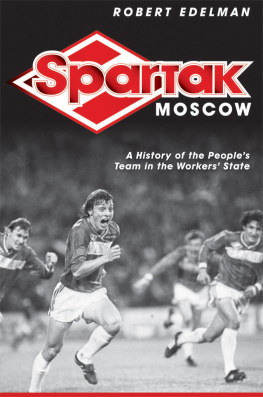Bibliographical Note
Many of the major contributions to the debate on peasant revolutions are available in English. The central works of Lenin and Chaianov have been translated. See V. I. Lenin, The Development of Capitalism in Russia (Moscow, 1972), and A. V. Chaianov, The Theory of the Peasant Economy (Homewood, Ill., 1966). Marxs earliest discussion of peasant politics can be found in the conclusion of The Eighteenth Brumaire of Louis Bonaparte (New York, 1963). Marxs discussion of rural economics can be found in Capital, vol. 3 (New York, 1967). Engelss best-known work on the rural world is The Peasant War in Germany (Moscow, 1974).
The leading protagonists in the moral economy versus political economy debate are James Scott, The Moral Economy of the Peasant: Rebellion and Subsistence in Southeast Asia (New Haven, Conn., 1976), and Samuel Popkin, The Rational Peasant (Berkeley, 1979). Jeffrey Paiges work, Agrarian Revolution: Social Movements and Export Agriculture (New York, 1975), discusses the roles of rural cultivators in a broad range of Third World countries. The concepts of Chaianov were extended by the Polish rural sociologist Boguslaw Galeski, Basic Concepts of Rural Sociology (Manchester, England, 1972).
The predominant role of the middle peasant was first systematically asserted by Hamza Alavi. See Peasants and Revolution, The Socialist Register for 1965. The idea was more fully elaborated by Eric Wolf in Peasant Wars of the Twentieth Century (New York, 1969). Differing approaches can be found in Barrington Moore, The Social Origins of Dictatorship and Democracy (Boston, 1966), Eric Hobsbawm, Primitive Rebels (New York, 1959), and Henry Landsberger, ed., Rural Protest (London, 1974). Throughout the 1970s and 1980s, the debate raged in the pages of the Journal of Peasant Studies. Important contributions were made by Sidney Mintz (October 1974), Terry Cox Uanuary 1984), Judith Enew (July 1977), Mark Harrison (January 1977), Teodor Shanin (October 1973), Claude Meillasoux (October 1973 and April 1983), and Eric Hobsbawm (October 1973).
The prevailing consensus on the Russian peasant was thoroughly challenged by Moshe Lewin, Russian Peasants and Soviet Power (London, 1968), and Teodor Shanin, The Awkward Class (Oxford, 1972). Their studies provoked new work on the Russian peasant, much of it still in progress. Three important works from the next wave of research are Esther Kingston-Mann, Lenin and the Problem of Peasant Revolution (Oxford, 1983), Dorothy Atkinson, The End of the Russian Land Commune (Stanford, 1983), and Maureen Perrie, The Agrarian Policy of the Russian Socialist-Revolutionary Party (Cambridge, 1976). Although it has been challenged on several important points, Geroid Robinsons Rural Russia under the Old Regime (Berkeley, 1932) remains a classic general account. Roberta Mannings The Crisis of the Old Order in Russia: Gentry and Government (Princeton, 1982), contains a chapter on peasants in 1905.
This book is based largely on primary sources. These include police archives in the Central State Archive of the October Revolution (TsGAOR) in Moscow (fond 102) Ministry of Justice records (fond 1405) and State Duma materials (fond 1278) in the Central State Historical Archive in Leningrad (TsGIAL). The bulk of the material comes from local archives in Kiev and Zhitomir. These include the papers of the governor-general of the southwest (fond 442) and the Kiev court (fond 318) in the Central State Historical Archive of the Ukrainian SSR (TsGIAU) in Kiev and the provincial administration for peasants (fond 115) in the Zhitomir Region State Archive (ZhOGA).
Published primary sources include the famous contemporary sociological survey of the disorders carried out by the Imperial Free Economic Society. See Agrarnoe dvizhenie v Rossii v 19051906 gg. (AD), 2 vols. (St. Petersburg, 1908). See also the massive collection of documents published by Soviet scholars on the fiftieth anniversary of the revolution, F. E. Los, ed., Revoliutsiia 19051907 gg. na Ukraine (UD), 3 vols. (Kiev, 1955). Extensive Ukrainian-language research by Soviet scholars provided broad information on economic conditions and on the disorders themselves. The leading Soviet authority on peasants in the right bank is M. N. Leshchenko. See his Selianskii rukh na pravoberezhnii ukraini v period revoliutsii 19051907 rr. (Kiev, 1955), and Ukrainske selo v revoliutsii 19051907 rr. (Kiev, 1977).
Soviet historiography on the peasant movement and the agricultural revolution is highly developed. For years the field was dominated by S. M. Dubrovskii, Krestianskoe dvizhenie v revoliutsii 19051907 gg. (Moscow, 1956), and P. N. Pershin, Agrarnaia revoliutsiia v Rossii, 2 vols. (Moscow, 1966). Their work has been challenged in different ways by A. M. Anfimov, Ekonomicheskoe polozhenie i klassovaia borba krestian evropeiskoi Rossii, 18811904 gg. (Moscow, 1984), and I. D. Kovalchenko and his collaborators. See Kovalchenko and L. Milov, Vserossiiskii agrarnyi rynok (Moscow, 1974), and I. D. Kovalchenko, N. B. Selunskaia and B. M. Litvakov, Sotsialnoekonomicheskii stroi pomeshchichego khoziaistva evropeiskoi Rossii v epokhu kapitalizma (Moscow, 1982).
In the absence of detailed statistical material that might have been compiled by zemstvos, had there been zemstvos in the southwest, it was necessary to reconstruct the economy of the region from the extensive contemporary professional and scientific literature on agriculture in the region. The bulletin of the sugar industry (Vestnik sakharnoi promyshlennosti) and the monthly journal of the Kiev Agronomic Society (Zemledelie) were especially useful.
I
A Theoretical Debate, a Political Struggle
On May 2, 1905, peasants in the province of Kiev withheld their labor from the large estate on which they had been working. Three years later, a correspondent of the semi-official Russian Imperial Free Economic Society, conducting a survey of the recent rural disorders, reported on the Kiev events:
The earliest appearance of the movement occurred the second of May on the sugar plantation of A. Tereshchenko in Voitsovtsy [Skvir district]. According to the indictment, workers had received twenty-five kopecks a day since the early spring. In response to peasant demands, the wage was raised to forty kopecks. However, on the first of May, the administrators of the estate again lowered the wage to thirty kopecks. The peasants then demanded fifty to seventy kopecks and quit work on May 2. To replace them, peasants were invited from the neighboring villages of Verbovoi, Gorodishch, and Kharlievka. On May 10, a crowd of peasants from Voitsovtsy appeared on Tereshchenkos plantation with sticks and whips in their hands. They demanded that the peasants from the other villages cease work immediately. Leave the fields, they said, They didnt give us these kinds of wages. We dont need you here. When the outside workers did not stop, the peasants of Voitsovtsy threw themselves on the strikebreakers and, shouting loudly, drove them off.... Then the peasants headed for Tereshchenkos stables and
Fifty-three years before the peasants of Voitsovtsy went on strike, Karl Marx sought to explain the politically conservative behavior of the French peasantry during the recent revolution and counterrevolution. In The Eighteenth Brumaire and The Class Struggles in France, Marx established the negative attitudes that urban-oriented socialists would bring to the analysis of the countryside. Rural votes had just swept Louis Napoleon into office. In the eyes of the left, peasants were individualistic, greedy, and ignorant, hardly the appropriate social base for revolution.








